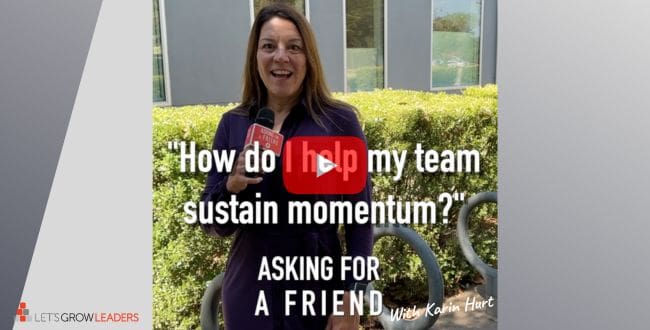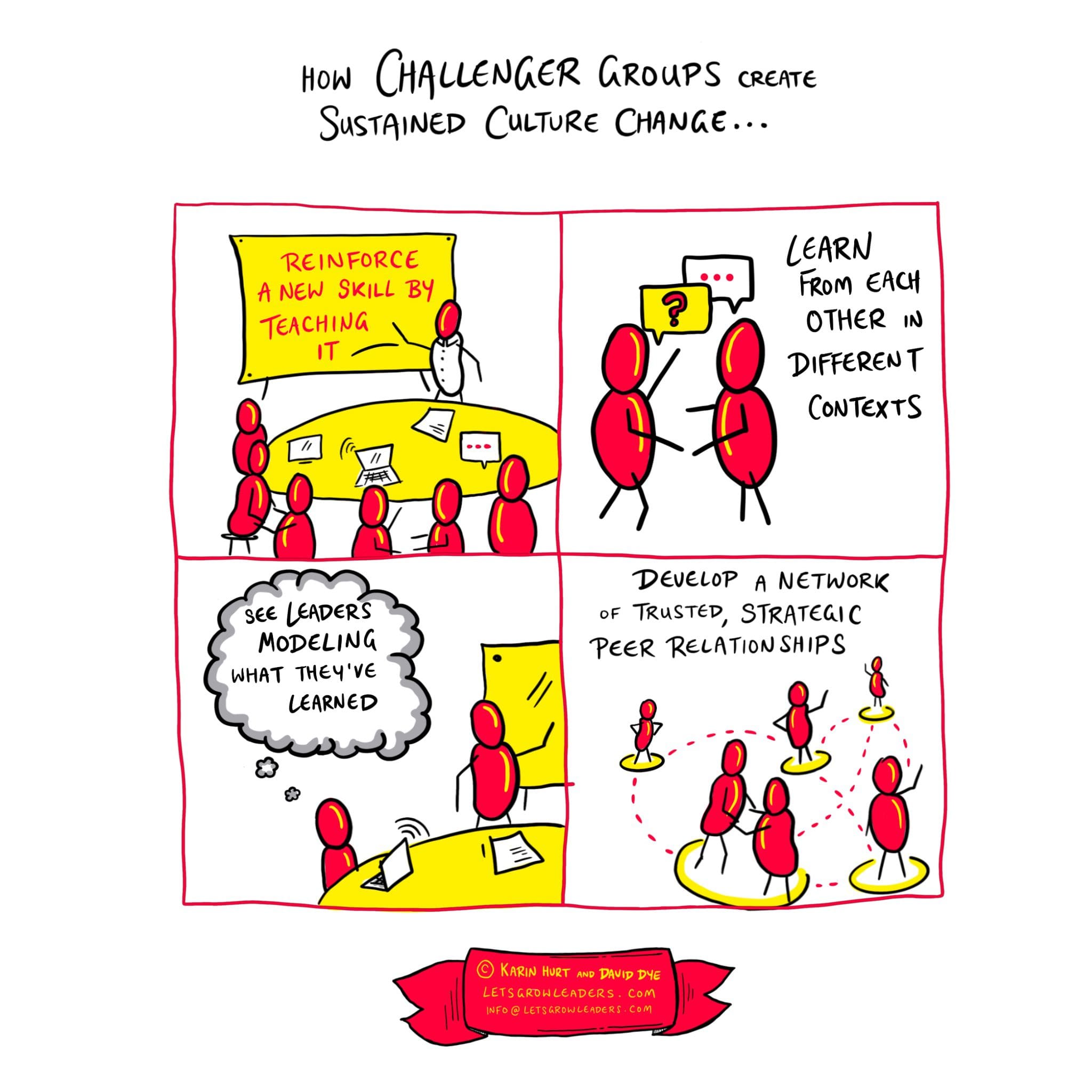Hi Karin, We just completed our leadership development program, and we’re feeling really good about how we’ve been applying what we’ve learned along the way. The leader-led Challenge and Support groups have been so helpful as we’ve worked to implement what we learned in our leadership training. How do we continue to sustain the momentum for a high leadership training ROI? #AskingforaFriend
How to Embed Leadership Training into Your Workplace Culture
First, I’m so impressed with all you’ve done already. Your recent experience with leader-led Challenge and Support groups indicates you’re already ahead of the curve in terms of transitioning your newfound leadership training knowledge into action.
These groups are, in essence, a ‘living lab,’ a place to test, refine, and validate the theories and practices absorbed during your leadership development program.
While the groups provide immediate feedback and peer accountability, what will drive the long-term sustainability of your skills is embedding them in your organizational culture and personal behavior. So how do you convert that initial leadership training surge into a constant stream of progress?
Practical, Proven Approaches to Sustain Leadership Training Momentum
1. Teach what you’ve learned
One of the best ways to become a rock star at a skill is to teach it. Consider sharing some of the leadership training tools you’ve learned and teaching them to others.
2. Celebrate success
When you see people using the tools and techniques, celebrate the effort and the outcomes.
3. Integrate the tools into the way your work processes
Many of our clients integrate the tools and techniques into the forms they use every day (e.g. their collaboration systems, one-on-one forms etc, and meeting agenda templates).
4. Focus on one behavior change at a time
When you learn game-changing leadership techniques, it’s tempting to try everything all at once. After all, if these techniques produce results, you owe it to your team to use them. Right? Perhaps. But not all at the same time.
Pick one specific behavior or approach from your leadership training that you know will make an impact and integrate it into your leadership approach. Practice it consistently. Tweak it. Make it your own. Ask for feedback. Once you feel confident and competent in that behavior, the timing might be right to add in another technique. Too much change all at once will overwhelm both you and your team.
6. Find an accountability partner
Change is hard, and it can be lonely. It’s much easier to give up when no one’s looking. Find someone you trust who understands what you’ve just learned (someone else in your training class is a great choice). Share the behavior you’re working on and make a commitment to check in with one another once a week to see how things are going, discuss challenges, and brainstorm the next steps.
7. Invite your team on the journey
Tell your team what you’ve learned and what you’ve chosen to work on and why. Invite them to notice when it’s working and offer suggestions as to what you can do better. Your team already knows you’re not perfect, and they’ll be delighted to know you’re working on becoming a more effective manager.
8. Ask for feedback
Make it a point to ask for feedback on the impact your new approach is having on the people you’re leading. Ask open-ended questions about what you can do to improve.
9. When you screw up, apologize and try again
New habits don’t come easy. If you slip back into old behaviors, apologize and try again. Your team knows you’re not perfect. They just want to know you’re trying. Leadership training is important, but what matters most is what you do when you get back to your team. With just a bit of focus, you can ensure the strongest ROI for you and your team.
See Also: 10 Questions to Ask Before Launching a Leadership Development Program











Think this can be the foundation of business . A good business idea fits in perfectly with good human relationships.
Thanks, Greg!